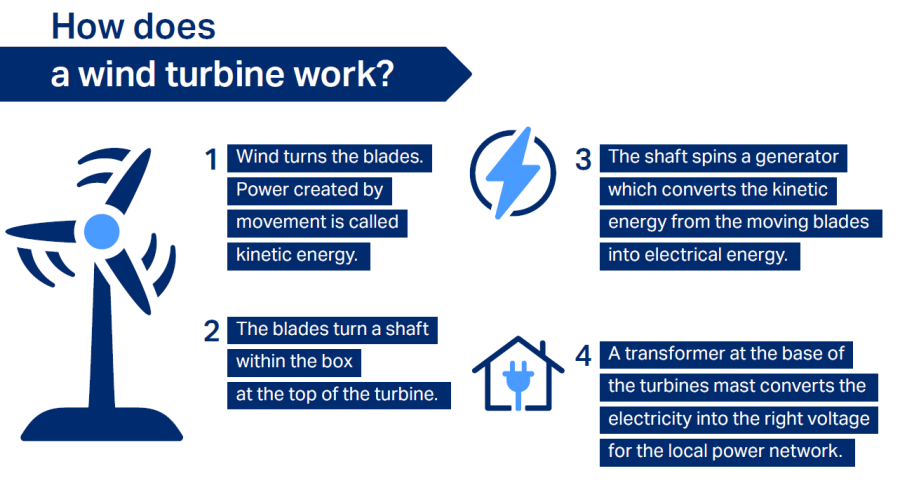Harnessing the breeze: how do wind turbines work?
Wind energy plays a vital role in Australia’s shift toward renewable power. But what exactly is wind energy, and how do wind turbines convert air into electricity?
What is wind energy?
Wind energy is a renewable energy source that harnesses the power of wind to generate electricity using wind turbines.

What are some advantages of wind energy?
While wind strength can vary daily and seasonally, wind generally provides a predictable supply of electricity over the longer term.
Researchers have found ways to use wind energy more reliably, such as combining wind farms with solar power and/or energy storage to ensure a steady supply of electricity.
What is the difference between onshore and offshore wind energy?
Onshore wind energy is electricity generated by wind turbines installed on sparsely populated land, often used for farming, without impacting farming practices.
Offshore wind energy is generated by turbines installed in bodies of water, typically off coastlines. The electricity produced is transmitted via undersea cables to the mainland, where it’s integrated into the power grid.
What are some onshore wind farm projects powering Australia’s renewable future?
Wind power is a key component of Australia’s transition to renewable energy. With abundant wind resources, in many parts of the country, numerous large-scale wind farms are being developed.
- The Delburn Wind Farm is a project in the Latrobe Valley, a region long associated with coal-fired power. Featuring 33 turbines and generating 205 MW, this wind farm is expected to power over 135,000 homes once operational in 2026.
- Clarke Creek Wind Farm located 150 km north-west of Rockhampton. The 450 MW wind farm will produce enough electricity to power 330,000 Queensland homes. As of May 2025, 87 wind turbines (of 100) have been installed and 75 of those have been commissioned and are able to generate electricity.
How do wind farm projects benefit regions?
Aside from helping regions to meet their energy needs, wind farm projects offer a range of social and economic benefits.
- Job creation – from construction to operation and maintenance, wind farm projects create local jobs, directly related to the wind farm and indirectly in the supply chain. The Delburn Wind Farm will create at least 186 full time jobs during construction for a range of occupations including electricians, concreters, steel fixers, civil engineers and truck drivers, and 24 jobs for the operational life of the wind farm.
- Community benefits – some developers provide direct support to the communities where their projects are located.
The Junction Rivers Wind Farm developed by Windland has a Community Benefits Fund to support the local community. More than $60,000 has been invested so far in community driven projects and cost of living relief across the Murray River and Balranald regions.
The Delburn Wind Farm has established a Community Development Fund to support community projects focused on sustainability, community health and wellbeing. To date, more than $40,100 in pre-development grants has been shared with community groups in the region.
Clarke Creek Wind Farm has a community fund of $200,000 each year for the life of the project, with $50,000 dedicated to scholarships for students of any age and level of education.
- Diversification of the local economy – in areas that have historically relied on coal mining, wind farm projects offer an alternative revenue stream for regions and offer new economic pathways for workers.
- Landowner income – Landowners who host wind farms on their properties receive rent from the developer. This provides an alternative income stream for landowners. While many wind farms are built on farmland, the Delburn wind farm will be built in a plantation forest.
